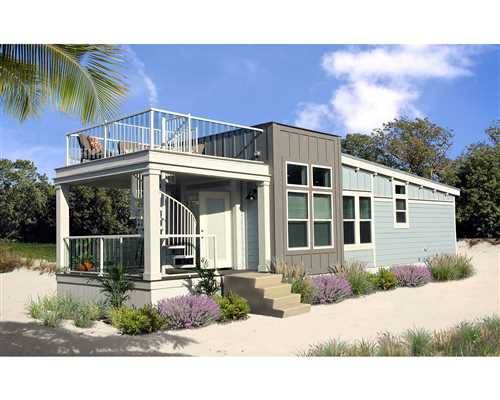Home Buying Guide
Factory-Built Homes 101: What You Need to Know
If you’re thinking about buying a factory-built home, it is important to learn as much as you can about this type of housing so that you can make informed decisions throughout the home-buying process. Getting all the information you need is as easy as turning to the Manufactured Housing Industry of Arizona (MHIA). From explaining what a factory-built home is to connecting you with qualified home builders, communities, retail centers, financial lenders, and more, our website contains every resource that you might need.
Factory-built homes are quality, affordable alternatives to traditional site-built houses. While they are still built with the same standard building materials used for on-site construction, what lends them their affordability is the factory construction process. Factory-built homes are built in a controlled factory environment that minimizes potential losses in damage suffered by most traditional home constructions. While under construction, factory-built homes are shielded from potentially costly hazards of inclement weather, vandalism, theft, and poor workmanship. The efficiency of the factory-built process reduces the cost per square foot of manufactured homes up to 50% when compared to traditional homes. Factory-built are growing in popularity and can be found in rural, suburban and urban areas all over the country. According to MHI (Manufactured Housing Institute), there are 8.6 million factory-built homes nationwide, representing 10% of the nation’s housing stock.

Before making any decision, it’s important to understand the basics of modern factory-built homes. Here is a brief overview of the differences and similarities between two kinds–Manufactured and Modular Homes:
Manufactured homes
These are homes built in a factory setting to the housing construction and safety standards established by the U.S. Department of Housing and Urban Development (HUD). In the years since the HUD Code was first introduced in 1976, it has been continually updated to incorporate new advances in construction techniques, procedures, and materials. Factory-built homes were often referred to as “mobile homes” as they can be transported from the construction facility to their final location, but this term has declined in use since the 1976 introduction of the HUD code. Factory-built homes can typically be bought at lower price points than other housing types and are especially popular when staying true to a tight budget. At the same time, they can be customized and built with as many features as your budget will allow.
Modular Homes
These homes are also built in a controlled factory facility with the same components as HUD Manufactured Homes. Modular homes are built section by section in a factory, and then transported to the home site where the remaining work is completed. Modular homes are built to the same building code as traditional homes and they also typically qualify for conventional mortgage loans. They are also the fastest-growing segment of the home building industry, allowing for considerable architectural design freedom. They are built to local code, can typically be built in any residential zone, and provide the opportunity for higher appraisals.
……………………………………………………………………………………………………..
Despite their differences, manufactured and modular homes have important similarities. First, both benefit from the inherent advantages of being built inside a factory under predictable conditions. Second, both factory-built homes and modular homes must conform to strict building codes that are frequently being updated. Third, either one can be built to be energy efficient using the latest ENERGY STAR®-rated materials and technologies.
The MHIA has members that build both manufactured and modular homes, as well as other members, including financial institutions, retail sales centers, housing communities, and other specialists available for consultation. Whether you decide on a manufactured or modular home for you and your family, we’ll connect you with the right resources to facilitate the process.
